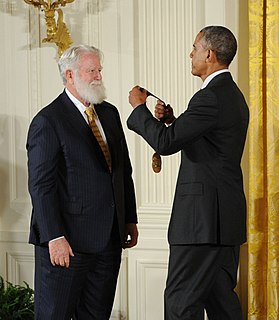Top 132 Quotes & Sayings by James Turrell
Explore popular quotes and sayings by an American artist James Turrell.
Last updated on April 14, 2025.
Generally, we use light to illuminate other things. I like the thingness, the materiality of light itself. So it feels like it's occupying the space, making a plane, being something that was there, not just passing through. Because light is just passing through. I make these spaces that seem to arrest it for our perception.
At Roden Crater, I was interested in taking the cultural artifice of art out into the natural surround. I wanted the work to be enfolded in nature in such a way that light from the sun, moon and stars empowered the spaces. I wanted to bring culture to the natural surround as if one was designing a garden.
























